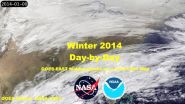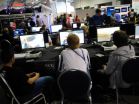(Press-News.org) Cold Spring Harbor, NY -- In recent years, behavioral neuroscientists have debated the meaning and significance of a plethora of independently conducted experiments seeking to establish the impact of chronic, early-life stress upon behavior – both at the time that stress is experienced, and upon the same individuals later in life, during adulthood.
These experiments, typically conducted in rodents, have on the one hand clearly indicated a link between certain kinds of early stress and dysfunction in the neuroendocrine system, particularly in the so-called HPA axis (hypothalamic-pituitary-adrenal), which regulates the endocrine glands and stress hormones including corticotropin and glucocorticoid.
Yet the evidence is by no means unequivocal. Stress studies in rodents have also clearly identified a native capacity, stronger in some individuals than others, and seemingly weak or absent in still others, to bounce back from chronic early-life stress. Some rodents subjected to early life stress have no apparent behavioral consequences in adulthood – they are disposed neither to anxiety nor depression, the classic pathologies understood to be induced by stress in certain individuals.
Today, a research team led by Associate Professor Grigori Enikolopov of Cold Spring Harbor Laboratory (CSHL) reports online in the journal PlOS One the results of experiments designed to assess the impacts of social stress upon adolescent mice, both at the time they are experienced and during adulthood. Involving many different kinds of stress tests and means of measuring their impacts, the research indicates that a "hostile environment in adolescence disturbs psychoemotional state and social behaviors of animals in adult life," the team says.
The tests began with 1-month-old male mice – the equivalent, in human terms of adolescents -- each placed for 2 weeks in a cage shared with an aggressive adult male. The animals were separated by a transparent perforated partition, but the young males were exposed daily to short attacks by the adult males. This kind of chronic activity produces what neurobiologists call social-defeat stress in the young mice. These mice were then studied in a range of behavioral tests.
"The tests assessed levels of anxiety, depression, and capacity to socialize and communicate with an unfamiliar partner," explains Enikolopov. These experiments showed that in young mice chronic social defeat induced high levels of anxiety helplessness, diminished social interaction, and diminished ability to communicate with other young animals. Stressed mice also had less new nerve-cell growth (neurogenesis) in a portion of the hippocampus known to be affected in depression: the subgranular zone of the dentate gyrus.
Another group of young mice was also exposed to social stress, but was then placed for several weeks in an unstressful environment. Following this "rest" period, these mice, now old enough to be considered adults, were tested in the same manner as the other cohort.
In this second, now-adult group, most of the behaviors impacted by social defeat returned to normal, as did neurogenesis, which retuned to a level seen in healthy controls. "This shows that young mice, exposed to adult aggressors, were largely resilient biologically and behaviorally," says Dr. Enikolopov.
However, in these resilient mice, the team measured two latent impacts on behavior. As adults they were abnormally anxious, and were observed to be more aggressive in their social interactions. "The exposure to a hostile environment during their adolescence had profound consequences in terms of emotional state and the ability to interact with peers," Dr. Enikolopov observes.
INFORMATION:
The research described in this release was supported by the Russian Foundation for Basic Research and by the National Institute of Mental Health.
"Extended Effect of Chronic Social Defeat Stress in Childhood on Behaviors in Adulthood" appears online in PlOS One Tuesday, March 25, 2014. The authors are: Irina L. Kovalenko, Anna G. Galyamina, Dmitry A. Smagin, Tatyana V. Michurina, Natalia N. Kudryavtseva and Grigori Enikolopov.
About Cold Spring Harbor Laboratory
Founded in 1890, Cold Spring Harbor Laboratory (CSHL) has shaped contemporary biomedical research and education with programs in cancer, neuroscience, plant biology and quantitative biology. CSHL is ranked number one in the world by Thomson Reuters for the impact of its research in molecular biology and genetics. The Laboratory has been home to eight Nobel Prize winners. Today, CSHL's multidisciplinary scientific community is more than 600 researchers and technicians strong and its Meetings & Courses program hosts more than 12,000 scientists from around the world each year to its Long Island campus and its China center. For more information, visit http://www.cshl.edu.
Neurobiologists find chronic stress in early life causes anxiety, aggression in adulthood
2014-03-27
ELSE PRESS RELEASES FROM THIS DATE:
Cause for exaggerated insulin response in subset of bariatric surgery patients identified
2014-03-27
CINCINNATI—University of Cincinnati (UC) researchers have discovered that altered islet cell function and reduced insulin clearance contribute to excessive post-meal insulin response in patients experiencing low blood sugar symptoms (hypoglycemia) following gastric bypass surgery.
These findings, led by Marzieh Salehi, MD, associate professor in the UC division of endocrinology, metabolism and diabetes, are featured online this month in The Journal of Clinical Endocrinology & Metabolism, and are part of an ongoing effort by UC researchers to better understand the effect ...
NASA's Hubble Space Telescope spots Mars-bound comet sprout multiple jets
2014-03-27
NASA released Thursday an image of a comet that, on Oct. 19, will pass within 84,000 miles of Mars -- less than half the distance between Earth and our moon.
The image on the left, captured Mar. 11 by NASA's Hubble Space Telescope, shows comet C/2013 A1, also called Siding Spring, at a distance of 353 million miles from Earth. Hubble can't see Siding Spring's icy nucleus because of its diminutive size. The nucleus is surrounded by a glowing dust cloud, or COMA, that measures roughly 12,000 miles across.
The right image shows the comet after image processing techniques ...
New guidance system could improve minimally invasive surgery
2014-03-27
Johns Hopkins researchers have devised a computerized process that could make minimally invasive surgery more accurate and streamlined using equipment already common in the operating room.
In a report published recently in the journal Physics in Medicine and Biology, the researchers say initial testing of the algorithm shows that their image-based guidance system is potentially superior to conventional tracking systems that have been the mainstay of surgical navigation over the last decade.
"Imaging in the operating room opens new possibilities for patient safety and ...
Anti-clotting agent helps reduce the incidence and impact of stent thrombosis during PCI
2014-03-27
WASHINGTON, DC – March 27, 2014 –A new angiographic analysis of the CHAMPION PHOENIX trial examined the incidence and impact of stent thrombosis (ST) in patients undergoing percutaneous coronary intervention (PCI). Results of the study were released today and will be presented March 30 at the American College of Cardiology 63rd Annual Scientific Session.
CHAMPION PHOENIX was a prospective, double-blind, active-controlled trial which randomized 11,145 patients to receive intravenous cangrelor or oral clopidogrel administered at the time of PCI. In a previous analysis presented ...
A tale of 2 species
2014-03-27
A pair of new studies from the Wildlife Conservation Society, Idaho State University, and the University of Nevada Reno look at the surprising variety of factors that prevent two closely related species of woodrats from becoming a single hybrid species despite the existence of hybrid individuals where the two species come into contact.
After finding that two closely related species, the desert and Bryant's woodrats, could interbreed and produce hybrid offspring, scientists set out to determine why only 14 percent of the population in a "contact zone" had genetic signatures ...
Satellite time-lapse movie shows US East Coast snowy winter
2014-03-27
VIDEO:
This new animation of NOAA's GOES-East satellite imagery shows the movement of winter storms from Jan. 1 to Mar. 24 making for a snowier-than-normal winter along the US East Coast...
Click here for more information.
A new time-lapse animation of data from NOAA's GOES-East satellite provides a good picture of why the U.S. East Coast experienced a snowier than normal winter. The new animation shows the movement of storms from January 1 to March 24.
NOAA's Geostationary ...
Food insecurity a growing challenge in Canada's northern and remote Aboriginal communities
2014-03-27
Ottawa (March 27, 2014) – A new expert panel report on food security in Northern Canada, has found that food insecurity among northern Aboriginal peoples requires urgent attention in order to mitigate impacts on health and well-being. Aboriginal Food Security in Northern Canada: An Assessment of the State of Knowledge, released today by the Council of Canadian Academies, addresses the diversity of experience that northern First Nations, Inuit, and Métis households and communities have with food insecurity.
Aboriginal households across Canada experience food insecurity ...
Computing with slime
2014-03-27
Oxford, March 27, 2014 - A future computer might be a lot slimier than the solid silicon devices we have today. In a study published in the journal Materials Today, European researchers reveal details of logic units built using living slime molds, which might act as the building blocks for computing devices and sensors.
Andrew Adamatzky (University of the West of England, Bristol, UK) and Theresa Schubert (Bauhaus-University Weimar, Germany) have constructed logical circuits that exploit networks of interconnected slime mold tubes to process information.
One is more ...
Study finds gaming augments players' social lives
2014-03-27
New research finds that online social behavior isn't replacing offline social behavior in the gaming community. Instead, online gaming is expanding players' social lives. The study was done by researchers at North Carolina State University, York University and the University of Ontario Institute of Technology.
"Gamers aren't the antisocial basement-dwellers we see in pop culture stereotypes, they're highly social people," says Dr. Nick Taylor, an assistant professor of communication at NC State and lead author of a paper on the study. "This won't be a surprise to the ...
People unwilling to swallow soda tax, size restrictions
2014-03-27
ITHACA, N.Y. – Those hoping to dilute Americans' taste for soda, energy drinks, sweetened tea, and other sugary beverages should take their quest to school lunchrooms rather than legislative chambers, according to a recent study by media and health policy experts.
Soda taxes and beverage portion size restrictions were unpalatable to the 1,319 U.S. adults questioned in a fall 2012 survey as part of a study reported online this month in the journal Preventive Medicine.
Adding front-of-package nutrition labels and removing sugary beverages from school environments garnered ...




